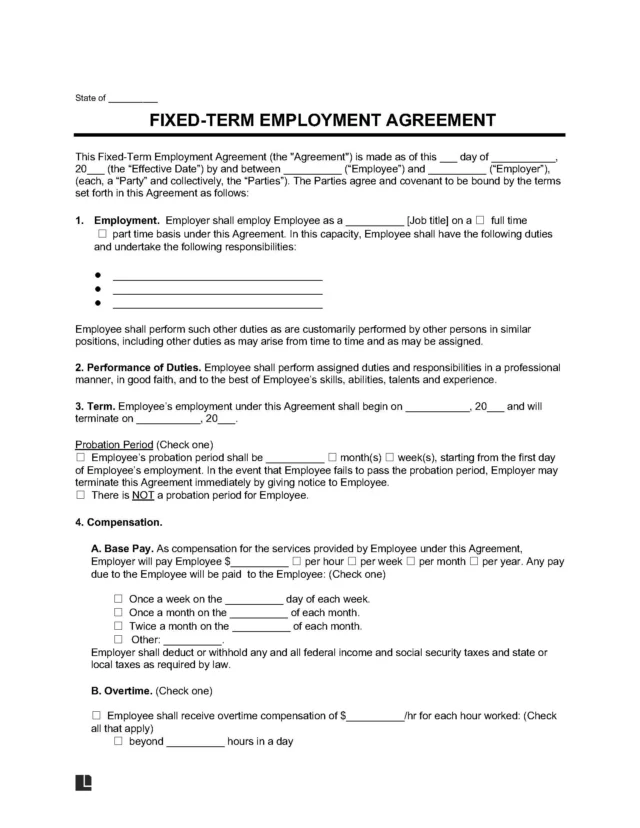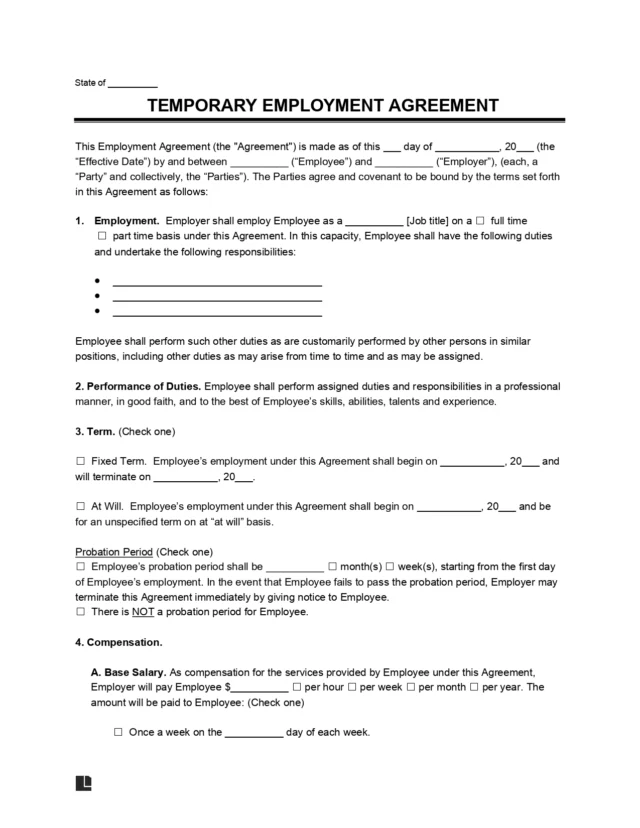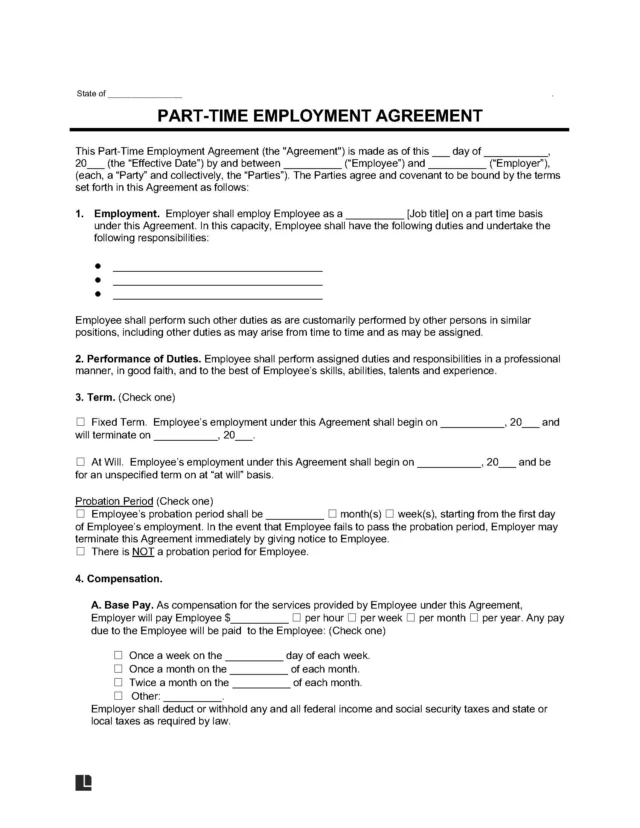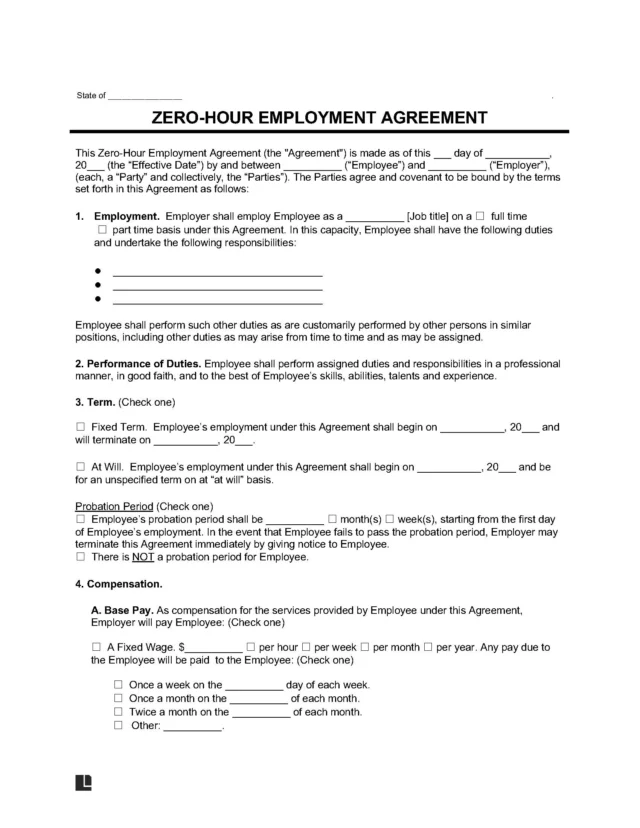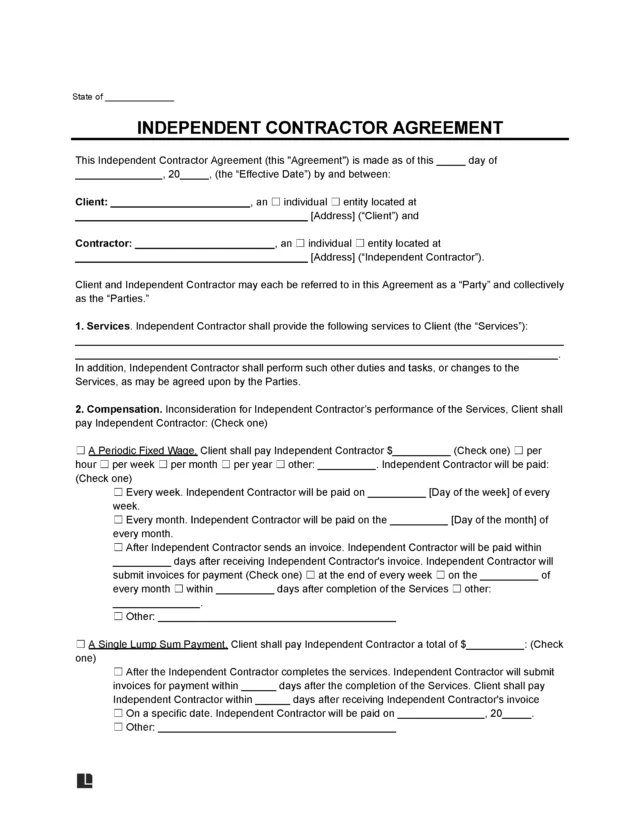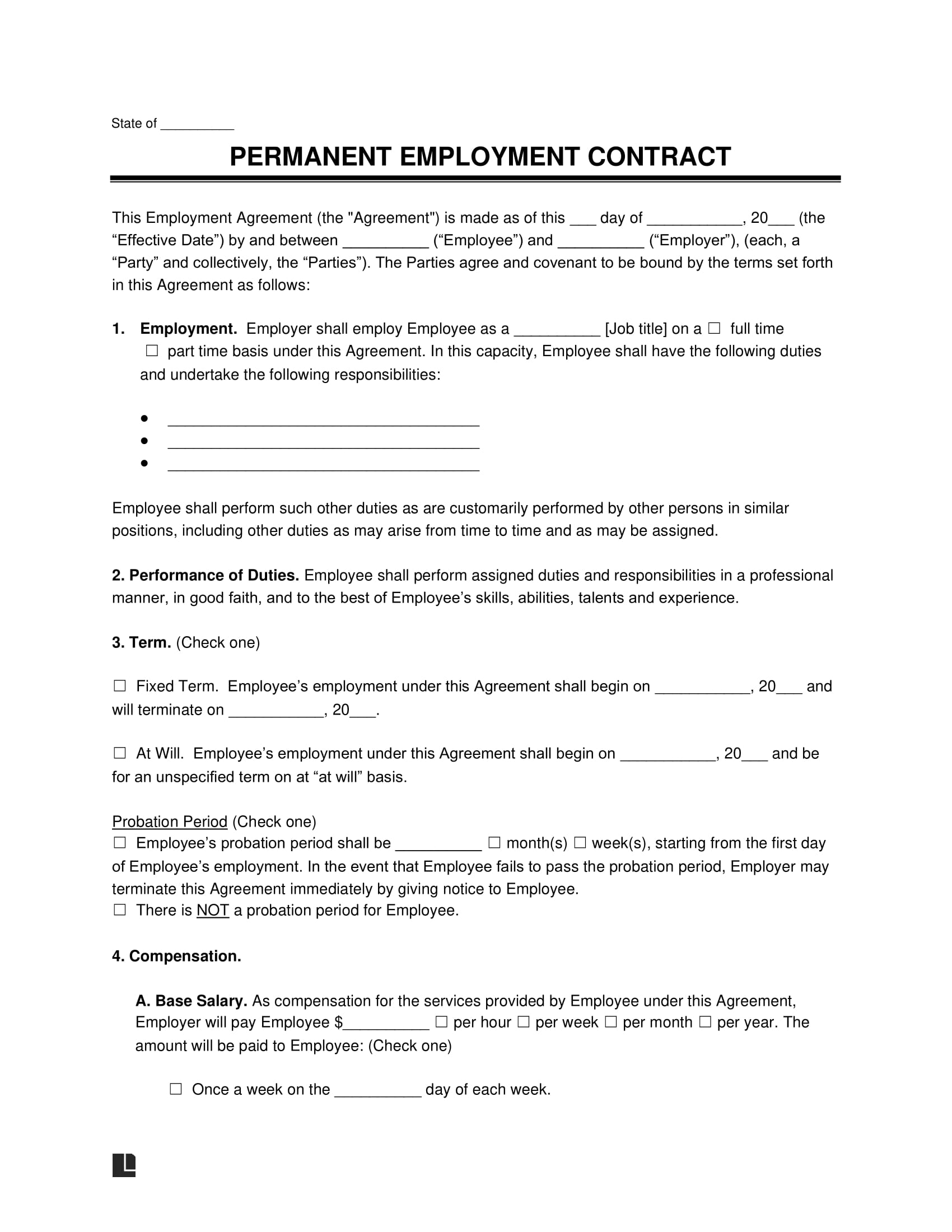What Is a Permanent Employment Contract?
A permanent employment contract is an open-ended agreement with no specified end date. This contract defines an employee’s duties, pay, benefits, and how either party can end the job. It creates stable jobs and helps meet the needs of clients with long-term business contracts.
A permanent contract introduces greater job security. Unlike an at-will contract, it can’t just end at any time. Instead, it often requires notice, a reason, or agreement from both sides.
Legal Templates’s permanent employment contract template makes it easy to explain the terms of a non-temporary job. Use our customizable form to add the details and create a clear, legally binding agreement.
Permanent vs. Fixed-Term Employment Contracts
A fixed-term contract is for a set amount of time and ends on a specific date. Because it’s temporary, it doesn’t offer much job security. A permanent contract, on the other hand, provides steady work with no set end date.
What Is the Difference Between Contract and Permanent Employment?
Most permanent contracts differ from contract agreements because they don’t include an end date. An independent contractor agreement has a specified end or renewal date. A permanent contract offers security, as both parties agree to the termination procedures. Contract employment creates a less steady arrangement, but allows for more flexibility.
What to Include in a Permanent Employment Contract
Write an effective permanent contract to attract long-term employees. A good contract includes important information, such as:
- The parties’ information: Include the employee’s and employer’s full names.
- The employee’s schedule: Note whether they work full or part-time. Also, provide their regular hours and days.
- The employment terms: Include the employment start date. Also, list details about a probation period.
- The job description: List the employee’s job title and describe their duties. Include any relevant work-from-home policies or hybrid work rules.
- The compensation arrangements: Add the agreed-upon salary and payment schedule. Include the terms for perks like overtime, commission, and bonuses.
- All additional benefits: Detail policies for PTO, retirement, or health insurance. Benefits make the job attractive to candidates and can reduce turnover.
- The termination process: Explain any notice periods, causes, or mutual agreements necessary to end the arrangement. Include the processes for both parties.
- Any extra provisions: Attach clauses such as a confidentiality or non-compete agreement. These terms increase loyalty and security.
Permanent Employment Contract Sample
View our free permanent employment contract sample for an idea of what to include. Available as a PDF and Word download.
Pros of a Permanent Employment Contract
A permanent contract provides many benefits to employers. This arrangement offers stability and attracts dedicated individuals by providing the following advantages.
Access to Employee Benefits
Unlike an independent contractor or temporary employee, a permanent employee usually gets benefits that make the job more valuable. These benefits can include paid time off for vacation, sick days, or personal time.
Many permanent jobs also offer health insurance, which helps cover doctor visits and medical bills. Some even include retirement plans, like a 401(k), to help employees save for the future. These benefits improve an employee’s quality of life and show your investment in their well-being for the long term.
Job Security
A permanent contract offers strong job security because it includes clear rules about when and how the job can end. The agreement usually requires notice or a valid reason before ending the job, which protects the employee.
Knowing the job is long-term helps the employee feel more secure and committed to the company. This can also build loyalty and trust between the employer and employee, resulting in better work performance and long-lasting teamwork.
Less Turnover
Loyalty and commitment reduce turnover and provide a stable and efficient work environment. A permanent contract can also include a non-compete to discourage employees from leaving. Loyalty and commitment reduce turnover and provide a stable and efficient employment relationship.
Cons of a Permanent Employment Contract
A permanent contract can also have downsides. The following disadvantages affect both employers and employees.
More Challenging to Terminate
The employer may experience restrictions on terminating the employee. The required notice period or causes included in the contract make it harder to let go of permanent employees. Temporary or at-will contracts can offer greater flexibility for ending the agreement.
More Expensive
A permanent employment arrangement offers benefits such as healthcare, PTO, and 401K accounts. These benefits make hiring permanent positions more expensive for the employer. Freelance or contract workers may cost less since they don’t always require an employer to offer benefits.
Less Flexibility
Having permanent employees can limit an employer’s flexibility, making it harder to adjust the size of the staff when necessary. Unlike a contract or zero-hour agreement, a permanent contract typically provides ongoing work. It also may need a notice period or negotiation to change the number of hours.
Clarify Expectations with a Permanent Employment Agreement
Create an easy and effective permanent employment agreement with Legal Templates’ lawyer-approved templates. Our document editor allows you to enter and customize the terms of your arrangement for a valid contract. Employers benefit from having these clear expectations and long-term agreements in writing.
Frequently Asked Questions
Can an employer change a contract from permanent to temporary?
No, an employer cannot change a contract from permanent to temporary without permission. The parties can negotiate a new contract if they agree on the change.
Can an employer terminate a permanent contract?
An employer’s ability to cancel a permanent contract depends on its terms. A contract may require a notice period, just cause, or mutual agreement. In this case, the employer cannot end it without meeting the requirements.
Is continuous employment a permanent contract?
Continuous employment may imply a permanent contract, but they’re different. Continuous employment refers to the time an employee or contractor has worked for the employer. This can include working under a freelance or zero-hour contract. On the other hand, a permanent contract establishes the worker as a direct company employee indefinitely.
Do permanent employment contracts need to be written?
While not always legally required, it’s best to have your contract in writing. A written agreement provides a reference for any disputes or claims.


